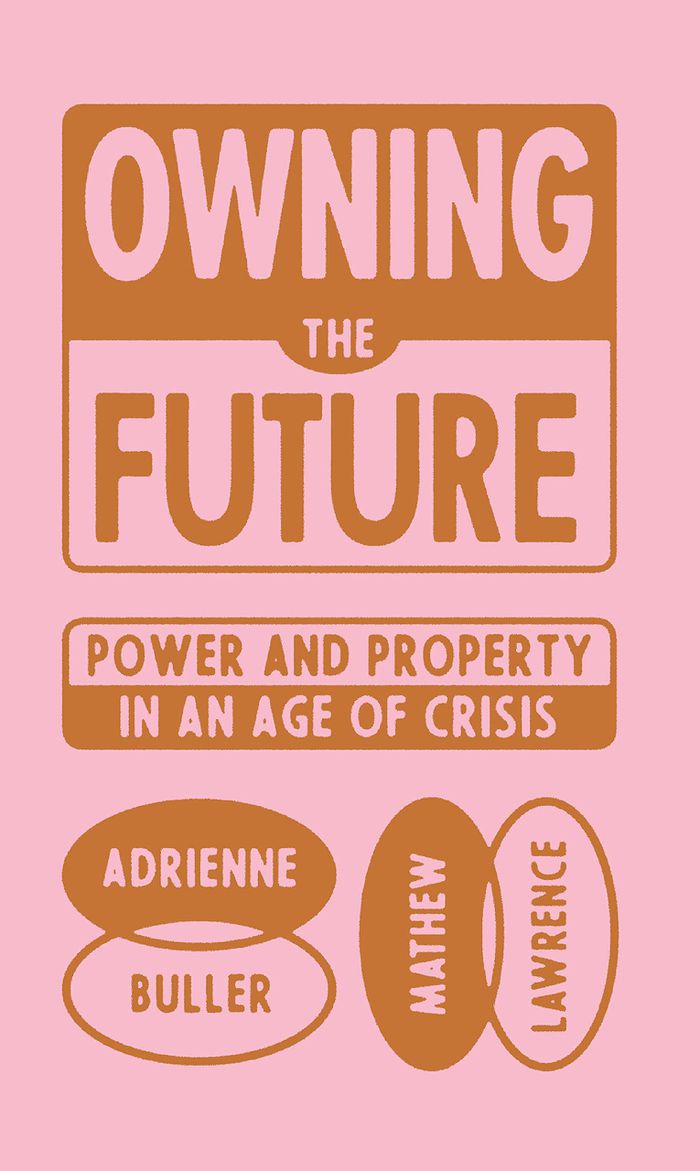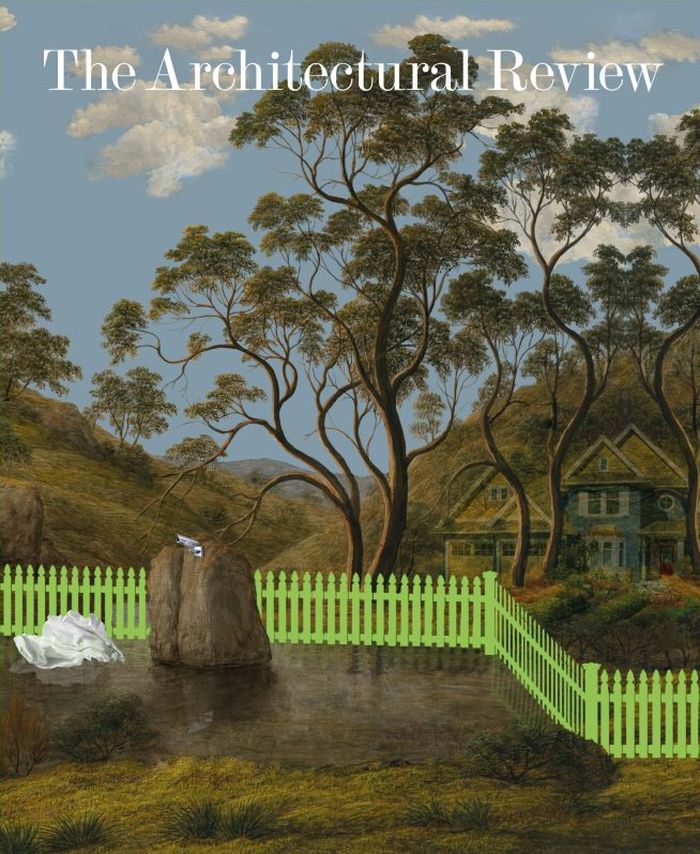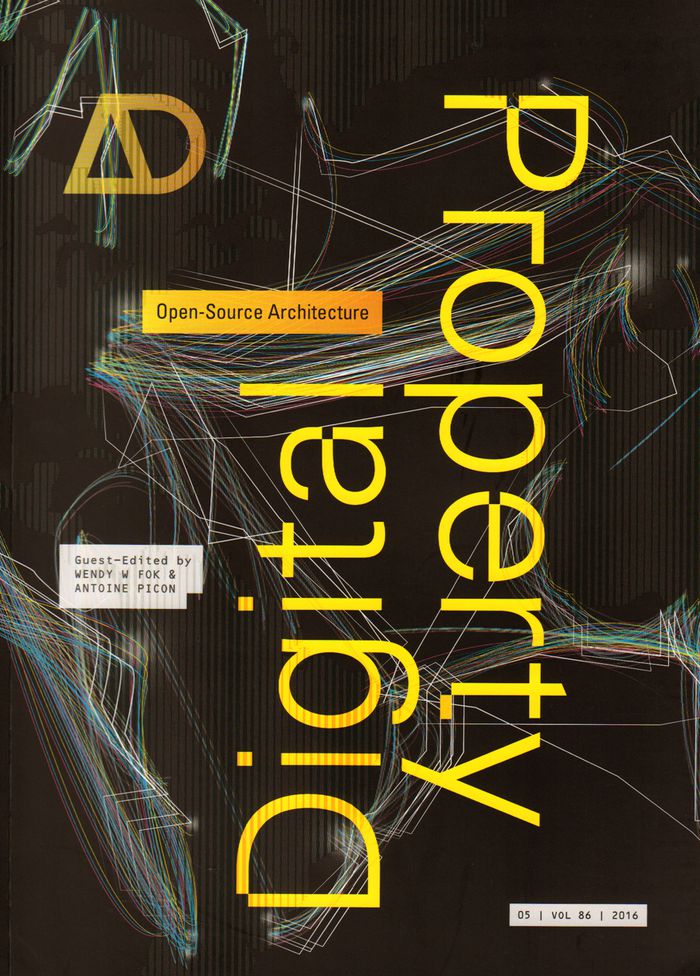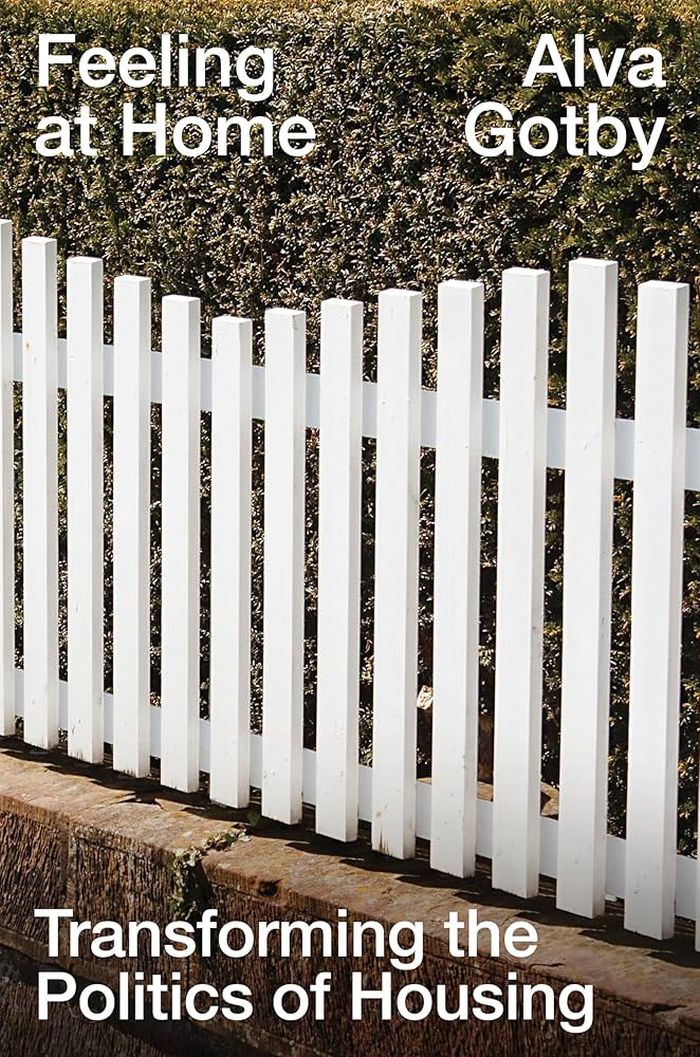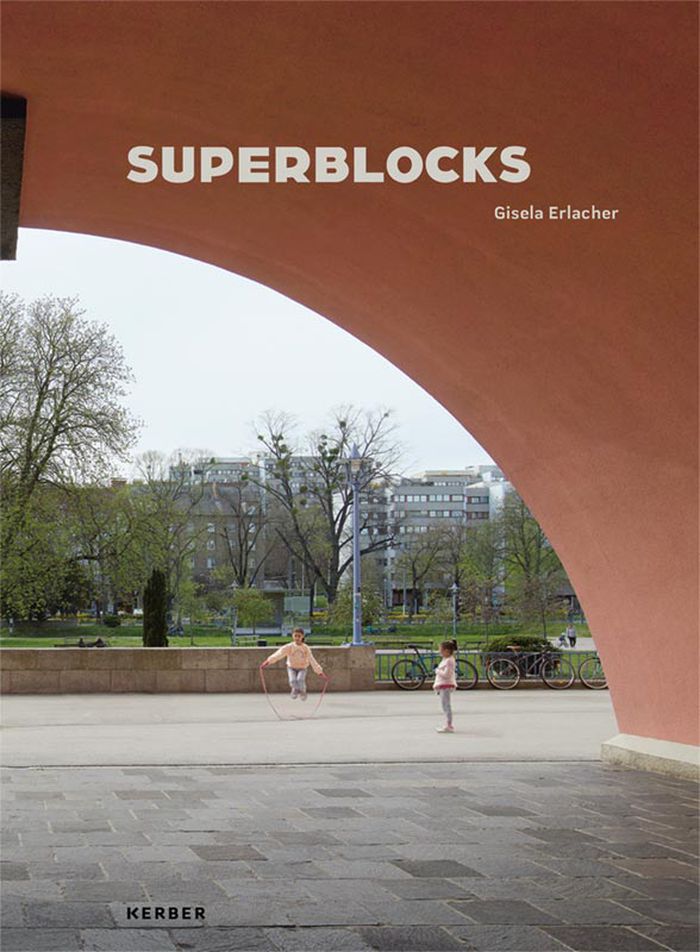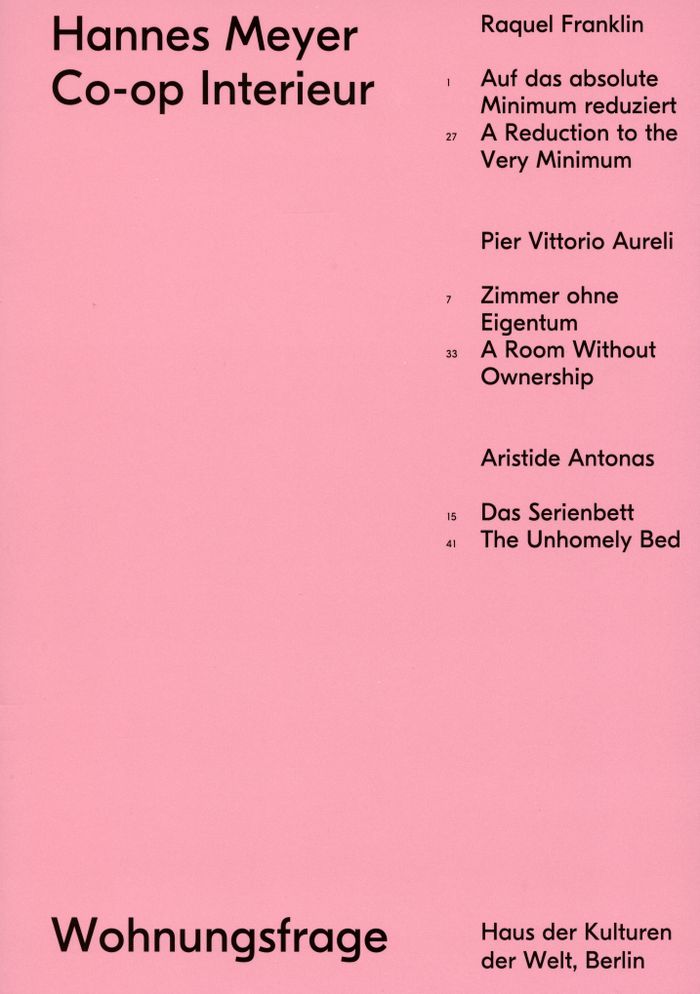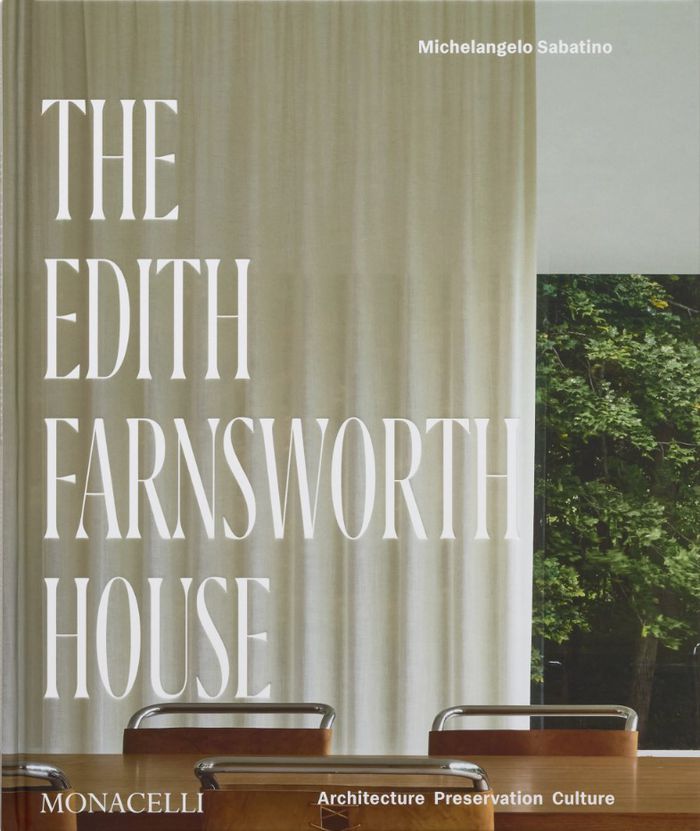454 Results
Form:
books
books
Actions:
Holdings:
Description:
vi, 280 pages : illustrations (some color), map ; 28 cm
- Library cage cca productions 154142 | 1994-5a | c. 1 | Available
- Library study room cca productions 154144 | NA44.B9615.25 C4 1994a | c. 3 | Available
- Library cage cca productions 154143 | 1994-5a | c. 2 | Available
- Library main 154145 | NA44.B9615.25 C4 1994a | c. 4 | Available
(See more)
Description:
vi, 280 pages : illustrations (some color), map ; 28 cm
Author:
Subject:
- Burlington, Richard Boyle, Earl of, 1694-1753 Criticism and interpretation Exhibitions.,
- Palladio, Andrea, 1508-1580 Influence Exhibitions.,
- Burlington, Richard Boyle, Earl of, 1694-1753 Critique et interprétation Expositions.,
- Jones, Inigo, 1573-1652 Influence Expositions.,
- Burlington, Richard Boyle, Earl of, 1694-1753,
- Palladio, Andrea, 1508-1580,
- Burlington, Richard Boyle, Earl of, 1694-1753 Criticism and interpretation.,
- Burlington, Richard Boyle, Earl of, 1694-1753 Exhibitions.,
- Burlington, Richard Boyle, 3rd earl of, 1695-1753.,
- Palladio, Andrea, (1508-1580) Influence Catalogues d'exposition.,
- Burlington, Richard Boyle, (1694-1753) Résidences et lieux familiers Expositions.,
- Chiswick House (Hounslow, London, England) Exhibitions.,
- Chiswick House (Hounslow, Londres, Angleterre) Expositions.,
- Chiswick House (Hounslow, London, England),
- Classicism in architecture England London Exhibitions.,
- Classicisme en architecture Angleterre Londres Expositions.,
- Palladianisme Angleterre Londres Expositions.,
- 21.62 history of architecture.,
- Buildings,
- Classicism in architecture,
- Influence (Literary, artistic, etc.),
- Villa's.,
- Verbouwingen.,
- Palladianisme.,
- Opdrachtgevers.,
- Classicisme (architecture) Angleterre (GB) Londres (GB) Catalogues d'exposition.,
- Chiswick (London, England) Buildings, structures, etc. Exhibitions.,
- Chiswick House Garden (Hounslow, London, England) Exhibitions.,
- Chiswick House Garden (Hounslow, Londres, Angleterre) Expositions.,
- England Hounslow Chiswick House Garden,
- England London,
- England London Chiswick,
- Londres (GB) Chiswick House Expositions.,
- Country houses Architecture.,
- Gardens Landscape design.,
- London (England),
- landhuizen,
- landgoederen,
- estates,
- tentoonstellingen,
- exhibitions,
- tuinen,
- great britain,
- geschiedenis,
- history,
- parken,
- parks,
- particulier eigendom,
- private ownership,
- shows,
- kastelen,
- castles,
- Architecture (General),
- Architectuur (algemeen),
- English architects.,
- Italian architects.,
- Palladian villas Great Britain England London 1710-1760.,
- Palladian architecture Great Britain England London 1710-1760.,
- Landscape gardens Great Britain England London 1710-1760.,
- Exhibition catalogs.,
- catalogs (documents),
- Catalogs,
- Criticism, interpretation, etc.,
- Exhibitions (form),
- Catalogues.
(See more)
Publication:
New Haven : Published in association with Yale University Press, ©1994.
New Haven : Published in association with Yale University Press, ©1994.
Title:
The Palladian revival : Lord Burlington, his villa and garden at Chiswick / John Harris.
Actions:
Holdings:
Description:
vi, 280 pages : illustrations (some color), map ; 28 cm
The Palladian revival : Lord Burlington, his villa and garden at Chiswick / John Harris.
Actions:
Holdings:
- Library cage cca productions 154142 | 1994-5a | c. 1 | Available
- Library study room cca productions 154144 | NA44.B9615.25 C4 1994a | c. 3 | Available
- Library cage cca productions 154143 | 1994-5a | c. 2 | Available
- Library main 154145 | NA44.B9615.25 C4 1994a | c. 4 | Available
(See more)
Description:
vi, 280 pages : illustrations (some color), map ; 28 cm
Form:
books
books
Publication:
New Haven : Published in association with Yale University Press, ©1994.
New Haven : Published in association with Yale University Press, ©1994.
Subject:
- Burlington, Richard Boyle, Earl of, 1694-1753 Criticism and interpretation Exhibitions.,
- Palladio, Andrea, 1508-1580 Influence Exhibitions.,
- Burlington, Richard Boyle, Earl of, 1694-1753 Critique et interprétation Expositions.,
- Jones, Inigo, 1573-1652 Influence Expositions.,
- Burlington, Richard Boyle, Earl of, 1694-1753,
- Palladio, Andrea, 1508-1580,
- Burlington, Richard Boyle, Earl of, 1694-1753 Criticism and interpretation.,
- Burlington, Richard Boyle, Earl of, 1694-1753 Exhibitions.,
- Burlington, Richard Boyle, 3rd earl of, 1695-1753.,
- Palladio, Andrea, (1508-1580) Influence Catalogues d'exposition.,
- Burlington, Richard Boyle, (1694-1753) Résidences et lieux familiers Expositions.,
- Chiswick House (Hounslow, London, England) Exhibitions.,
- Chiswick House (Hounslow, Londres, Angleterre) Expositions.,
- Chiswick House (Hounslow, London, England),
- Classicism in architecture England London Exhibitions.,
- Classicisme en architecture Angleterre Londres Expositions.,
- Palladianisme Angleterre Londres Expositions.,
- 21.62 history of architecture.,
- Buildings,
- Classicism in architecture,
- Influence (Literary, artistic, etc.),
- Villa's.,
- Verbouwingen.,
- Palladianisme.,
- Opdrachtgevers.,
- Classicisme (architecture) Angleterre (GB) Londres (GB) Catalogues d'exposition.,
- Chiswick (London, England) Buildings, structures, etc. Exhibitions.,
- Chiswick House Garden (Hounslow, London, England) Exhibitions.,
- Chiswick House Garden (Hounslow, Londres, Angleterre) Expositions.,
- England Hounslow Chiswick House Garden,
- England London,
- England London Chiswick,
- Londres (GB) Chiswick House Expositions.,
- Country houses Architecture.,
- Gardens Landscape design.,
- London (England),
- landhuizen,
- landgoederen,
- estates,
- tentoonstellingen,
- exhibitions,
- tuinen,
- great britain,
- geschiedenis,
- history,
- parken,
- parks,
- particulier eigendom,
- private ownership,
- shows,
- kastelen,
- castles,
- Architecture (General),
- Architectuur (algemeen),
- English architects.,
- Italian architects.,
- Palladian villas Great Britain England London 1710-1760.,
- Palladian architecture Great Britain England London 1710-1760.,
- Landscape gardens Great Britain England London 1710-1760.,
- Exhibition catalogs.,
- catalogs (documents),
- Catalogs,
- Criticism, interpretation, etc.,
- Exhibitions (form),
- Catalogues.
(See more)
Actions:
Price:
$25.95
(available to order)
Summary:
The question of ownership is the critical fault line of our times, and during the pandemic this issue has only become more divisive. In the face of crisis, the authors warn that mere redistribution within current forms of ownership is not enough; our goal must be to go beyond the limits of the current system, dominated by private enclosure and unequal ownership. Only by(...)
$25.95
(available to order)
Summary:
The question of ownership is the critical fault line of our times, and during the pandemic this issue has only become more divisive. In the face of crisis, the authors warn that mere redistribution within current forms of ownership is not enough; our goal must be to go beyond the limits of the current system, dominated by private enclosure and unequal ownership. Only by(...)
Title:
Owning the future: Power and property in an age of crisis
Actions:
Price:
$25.95
(available to order)
Summary:
The question of ownership is the critical fault line of our times, and during the pandemic this issue has only become more divisive. In the face of crisis, the authors warn that mere redistribution within current forms of ownership is not enough; our goal must be to go beyond the limits of the current system, dominated by private enclosure and unequal ownership. Only by reimagining how our economy is owned and by whom can we address the crises of our time—from the fallout of the pandemic to ecological collapse—at their roots. The authors argue that the systemic change we need hinges on a new era of democratic ownership: a reinvention of the firm as a vehicle for collective endeavour and meeting social needs; against the oligarchy of the platform giants, a digital commons that uses our data for collective good, not private profit; in place of environmental devastation, a new agenda of decommodification—of both nature and needs—with a Green New Deal and collective stewardship of the planet’s natural wealth. Together, these proposals offer a road map to owning the future and building a better world.
Owning the future: Power and property in an age of crisis
Actions:
Price:
$25.95
(available to order)
Summary:
The question of ownership is the critical fault line of our times, and during the pandemic this issue has only become more divisive. In the face of crisis, the authors warn that mere redistribution within current forms of ownership is not enough; our goal must be to go beyond the limits of the current system, dominated by private enclosure and unequal ownership. Only by reimagining how our economy is owned and by whom can we address the crises of our time—from the fallout of the pandemic to ecological collapse—at their roots. The authors argue that the systemic change we need hinges on a new era of democratic ownership: a reinvention of the firm as a vehicle for collective endeavour and meeting social needs; against the oligarchy of the platform giants, a digital commons that uses our data for collective good, not private profit; in place of environmental devastation, a new agenda of decommodification—of both nature and needs—with a Green New Deal and collective stewardship of the planet’s natural wealth. Together, these proposals offer a road map to owning the future and building a better world.
Subject:
Social
Social
Form:
books
books
Actions:
Holdings:
Description:
xvi, 261 pages : illustrations ; 24 cm.
Description:
xvi, 261 pages : illustrations ; 24 cm.
Subject:
- Housing Illinois Chicago Metropolitan Area History.,
- Working class Illinois Chicago Metropolitan Area History.,
- Immigrants Housing Illinois Chicago Metropolitan Area History.,
- Minorities Housing Illinois Chicago Metropolitan Area History.,
- Architecture, Domestic Illinois Chicago Metropolitan Area History.,
- Logement Illinois Chicago, Agglomération de Histoire.,
- Travailleurs Illinois Chicago, Agglomération de Histoire.,
- Immigrants Logement Illinois Chicago, Agglomération de Histoire.,
- Minorités Logement Illinois Chicago, Agglomération de Histoire.,
- Architecture domestique Illinois Chicago, Agglomération de Histoire.,
- Architecture, Domestic,
- Housing,
- Immigrants Housing,
- Minorities Housing,
- Working class,
- Wohnen,
- Architektur,
- Arbeiterklasse,
- Einwanderer,
- Huisvesting.,
- Arbeiders.,
- Minderheden.,
- Immigranten.,
- Bouwkunst.,
- Illinois Chicago Metropolitan Area,
- Chicago, Ill.,
- Houses United States Illinois Chicago Metropolitan Area 1860-1930.,
- Housing United States Illinois Chicago Metropolitan Area 1860-1930.,
- Immigrants United States Illinois Chicago Metropolitan Area 1860-1930.,
- Minorities United States Illinois Chicago Metropolitan Area 1860-1930.,
- Working class United States Illinois Chicago Metropolitan Area 1860-1930.,
- History
(See more)
Publication:
Chicago : University of Chicago Press, 2001.
Chicago : University of Chicago Press, 2001.
Title:
From cottage to bungalow : houses and the working class in metropolitan Chicago, 1869-1929 / Joseph C. Bigott.
Actions:
Holdings:
Description:
xvi, 261 pages : illustrations ; 24 cm.
From cottage to bungalow : houses and the working class in metropolitan Chicago, 1869-1929 / Joseph C. Bigott.
Actions:
Holdings:
Description:
xvi, 261 pages : illustrations ; 24 cm.
Form:
books
books
Publication:
Chicago : University of Chicago Press, 2001.
Chicago : University of Chicago Press, 2001.
Subject:
- Housing Illinois Chicago Metropolitan Area History.,
- Working class Illinois Chicago Metropolitan Area History.,
- Immigrants Housing Illinois Chicago Metropolitan Area History.,
- Minorities Housing Illinois Chicago Metropolitan Area History.,
- Architecture, Domestic Illinois Chicago Metropolitan Area History.,
- Logement Illinois Chicago, Agglomération de Histoire.,
- Travailleurs Illinois Chicago, Agglomération de Histoire.,
- Immigrants Logement Illinois Chicago, Agglomération de Histoire.,
- Minorités Logement Illinois Chicago, Agglomération de Histoire.,
- Architecture domestique Illinois Chicago, Agglomération de Histoire.,
- Architecture, Domestic,
- Housing,
- Immigrants Housing,
- Minorities Housing,
- Working class,
- Wohnen,
- Architektur,
- Arbeiterklasse,
- Einwanderer,
- Huisvesting.,
- Arbeiders.,
- Minderheden.,
- Immigranten.,
- Bouwkunst.,
- Illinois Chicago Metropolitan Area,
- Chicago, Ill.,
- Houses United States Illinois Chicago Metropolitan Area 1860-1930.,
- Housing United States Illinois Chicago Metropolitan Area 1860-1930.,
- Immigrants United States Illinois Chicago Metropolitan Area 1860-1930.,
- Minorities United States Illinois Chicago Metropolitan Area 1860-1930.,
- Working class United States Illinois Chicago Metropolitan Area 1860-1930.,
- History
(See more)
Actions:
Price:
$47.75
(available to order)
Summary:
The legal and economic frameworks of ownership are so ubiquitous that it is easy to forget that they are human-made, with their own specific histories. The September issue of "The Architectural Review" looks at some of these histories, from the ideas of John Locke to their violent instrumentalisation within a range of colonial contexts. From new housing in Singapore and(...)
$47.75
(available to order)
Summary:
The legal and economic frameworks of ownership are so ubiquitous that it is easy to forget that they are human-made, with their own specific histories. The September issue of "The Architectural Review" looks at some of these histories, from the ideas of John Locke to their violent instrumentalisation within a range of colonial contexts. From new housing in Singapore and(...)
Title:
The Architectural Review 1504, September 2023
Actions:
Price:
$47.75
(available to order)
Summary:
The legal and economic frameworks of ownership are so ubiquitous that it is easy to forget that they are human-made, with their own specific histories. The September issue of "The Architectural Review" looks at some of these histories, from the ideas of John Locke to their violent instrumentalisation within a range of colonial contexts. From new housing in Singapore and Geneva to alternative models of co-living and co-operative ownership, and from prospecting tools of digital gameworlds to a story of placemaking gone horribly wrong, the Property issue examines how the concept of property shapes design, and who benefits.
The Architectural Review 1504, September 2023
Actions:
Price:
$47.75
(available to order)
Summary:
The legal and economic frameworks of ownership are so ubiquitous that it is easy to forget that they are human-made, with their own specific histories. The September issue of "The Architectural Review" looks at some of these histories, from the ideas of John Locke to their violent instrumentalisation within a range of colonial contexts. From new housing in Singapore and Geneva to alternative models of co-living and co-operative ownership, and from prospecting tools of digital gameworlds to a story of placemaking gone horribly wrong, the Property issue examines how the concept of property shapes design, and who benefits.
Subject:
Magazines
Magazines
Actions:
Price:
$47.95
(available to order)
Summary:
Even more than authorship, ownership is challenged by the rise of digital and computational methods of design and production. These challenges are simultaneously legal, ethical and economic. How are new methods of fabrication and manufacture going to irreversibly change not only ways of working, but also designers’ ethics and their stance on ownership? In his 2013(...)
$47.95
(available to order)
Summary:
Even more than authorship, ownership is challenged by the rise of digital and computational methods of design and production. These challenges are simultaneously legal, ethical and economic. How are new methods of fabrication and manufacture going to irreversibly change not only ways of working, but also designers’ ethics and their stance on ownership? In his 2013(...)
Title:
AD Digital property : open-source architecture
Actions:
Price:
$47.95
(available to order)
Summary:
Even more than authorship, ownership is challenged by the rise of digital and computational methods of design and production. These challenges are simultaneously legal, ethical and economic. How are new methods of fabrication and manufacture going to irreversibly change not only ways of working, but also designers’ ethics and their stance on ownership? In his 2013 second-term State of the Union address, President Obama stated that 3D printing ‘has the potential to revolutionize the way we make almost everything’. Nowhere will the impact of 3D printing be felt greater than in the architectural and design communities. When anyone can print out an object or structure from a digital file, will designers still exert the same creative rights or will they need to develop new practice and payment models? As architecture becomes more collaborative with open-source processes, will the emphasis on signature as the basis of ownership remain relevant? How will wider teams working globally be accredited and compensated? This issue of AD explores this subject; it features the work of designers who are developing wholly new approaches to practice by exploring means of commercialising process-based products rather than objects.
AD Digital property : open-source architecture
Actions:
Price:
$47.95
(available to order)
Summary:
Even more than authorship, ownership is challenged by the rise of digital and computational methods of design and production. These challenges are simultaneously legal, ethical and economic. How are new methods of fabrication and manufacture going to irreversibly change not only ways of working, but also designers’ ethics and their stance on ownership? In his 2013 second-term State of the Union address, President Obama stated that 3D printing ‘has the potential to revolutionize the way we make almost everything’. Nowhere will the impact of 3D printing be felt greater than in the architectural and design communities. When anyone can print out an object or structure from a digital file, will designers still exert the same creative rights or will they need to develop new practice and payment models? As architecture becomes more collaborative with open-source processes, will the emphasis on signature as the basis of ownership remain relevant? How will wider teams working globally be accredited and compensated? This issue of AD explores this subject; it features the work of designers who are developing wholly new approaches to practice by exploring means of commercialising process-based products rather than objects.
Subject:
Magazines
Magazines
Actions:
Price:
$40.00
(available in store)
Summary:
''Who owns the land?'' is a central question because space is a resource as vital as air and water. Today, however, data ownership has become just as relevant as the question of land ownership in the context of urban planning. Technology companies are entering the field of architecture with algorithm-driven planning methods and massive investments in infrastructures and(...)
$40.00
(available in store)
Summary:
''Who owns the land?'' is a central question because space is a resource as vital as air and water. Today, however, data ownership has become just as relevant as the question of land ownership in the context of urban planning. Technology companies are entering the field of architecture with algorithm-driven planning methods and massive investments in infrastructures and(...)
Title:
Arch+, The property issue: Politics of space and data.
Actions:
Price:
$40.00
(available in store)
Summary:
''Who owns the land?'' is a central question because space is a resource as vital as air and water. Today, however, data ownership has become just as relevant as the question of land ownership in the context of urban planning. Technology companies are entering the field of architecture with algorithm-driven planning methods and massive investments in infrastructures and smart cities. In their technocratic vision, citizens become users, architecture becomes an instrument of statistics, and concepts such as the city and society become mere algorithmic assemblages. This issue, co-edited by ARCH+, Arno Brandlhuber, and Olaf Grawert of station+/ETH Zurich, discusses the politics of space and data; the real and virtual assets of the city of the future.
Arch+, The property issue: Politics of space and data.
Actions:
Price:
$40.00
(available in store)
Summary:
''Who owns the land?'' is a central question because space is a resource as vital as air and water. Today, however, data ownership has become just as relevant as the question of land ownership in the context of urban planning. Technology companies are entering the field of architecture with algorithm-driven planning methods and massive investments in infrastructures and smart cities. In their technocratic vision, citizens become users, architecture becomes an instrument of statistics, and concepts such as the city and society become mere algorithmic assemblages. This issue, co-edited by ARCH+, Arno Brandlhuber, and Olaf Grawert of station+/ETH Zurich, discusses the politics of space and data; the real and virtual assets of the city of the future.
Subject:
Magazines
Magazines
Actions:
Price:
$33.95
(available in store)
Summary:
Housing is more than bricks and mortar. The home is where our hopes and dreams play out, and it lies at the heart of our lives. This is where we rest, eat, and relax. The home we enjoy can determine our health, life expectancy, and day-to-day well-being. In contrast, the lack of a stable residence can lead to mental and physical illness and often premature death. This is(...)
$33.95
(available in store)
Summary:
Housing is more than bricks and mortar. The home is where our hopes and dreams play out, and it lies at the heart of our lives. This is where we rest, eat, and relax. The home we enjoy can determine our health, life expectancy, and day-to-day well-being. In contrast, the lack of a stable residence can lead to mental and physical illness and often premature death. This is(...)
Title:
Feeling at home: Transforming the politics of housing
Actions:
Price:
$33.95
(available in store)
Summary:
Housing is more than bricks and mortar. The home is where our hopes and dreams play out, and it lies at the heart of our lives. This is where we rest, eat, and relax. The home we enjoy can determine our health, life expectancy, and day-to-day well-being. In contrast, the lack of a stable residence can lead to mental and physical illness and often premature death. This is central to how we conceive of a good and dignified life. "Feeling at home" grapples with the practical and emotional questions of housing – domestic labour, privacy, security, ownership, and health. Is it possible to imagine success without home ownership? Alva Gotby makes clear that solving the housing crisis is about much more than housing stock. It is about revolutionising our everyday lives and labours.
Feeling at home: Transforming the politics of housing
Actions:
Price:
$33.95
(available in store)
Summary:
Housing is more than bricks and mortar. The home is where our hopes and dreams play out, and it lies at the heart of our lives. This is where we rest, eat, and relax. The home we enjoy can determine our health, life expectancy, and day-to-day well-being. In contrast, the lack of a stable residence can lead to mental and physical illness and often premature death. This is central to how we conceive of a good and dignified life. "Feeling at home" grapples with the practical and emotional questions of housing – domestic labour, privacy, security, ownership, and health. Is it possible to imagine success without home ownership? Alva Gotby makes clear that solving the housing crisis is about much more than housing stock. It is about revolutionising our everyday lives and labours.
Subject:
Humans and cities
Humans and cities
Title:
Gisela Erlacher: Superblocks
Gisela Erlacher: Superblocks
Actions:
Price:
$88.00
(available to order)
Summary:
With the municipal buildings of "Red Vienna," the utopia of enabling weaker individuals in society to also have a good life was realized. Originally erected in the 1920s to provide affordable living space for the working class as well as urban infrastructure, communal ownership of housing also makes it possible today to integrate people who would otherwise have limited(...)
$88.00
(available to order)
Summary:
With the municipal buildings of "Red Vienna," the utopia of enabling weaker individuals in society to also have a good life was realized. Originally erected in the 1920s to provide affordable living space for the working class as well as urban infrastructure, communal ownership of housing also makes it possible today to integrate people who would otherwise have limited(...)
Title:
Gisela Erlacher: Superblocks
Actions:
Price:
$88.00
(available to order)
Summary:
With the municipal buildings of "Red Vienna," the utopia of enabling weaker individuals in society to also have a good life was realized. Originally erected in the 1920s to provide affordable living space for the working class as well as urban infrastructure, communal ownership of housing also makes it possible today to integrate people who would otherwise have limited opportunities in neoliberal society. The relevance of municipal ownership to the current situation consists as well of the possibility to exert an attenuating influence on real estate speculation and rising rents. With her camera, Gisela Erlacher follows the parcours through the archways of "superblocks" such as the Sandleiten-Hof, Goethe-Hof, and Karl-Marx-Hof. She portrays residents and visitors in all their diversity and gives them space to present themselves beyond stereotyped depictions.
Gisela Erlacher: Superblocks
Actions:
Price:
$88.00
(available to order)
Summary:
With the municipal buildings of "Red Vienna," the utopia of enabling weaker individuals in society to also have a good life was realized. Originally erected in the 1920s to provide affordable living space for the working class as well as urban infrastructure, communal ownership of housing also makes it possible today to integrate people who would otherwise have limited opportunities in neoliberal society. The relevance of municipal ownership to the current situation consists as well of the possibility to exert an attenuating influence on real estate speculation and rising rents. With her camera, Gisela Erlacher follows the parcours through the archways of "superblocks" such as the Sandleiten-Hof, Goethe-Hof, and Karl-Marx-Hof. She portrays residents and visitors in all their diversity and gives them space to present themselves beyond stereotyped depictions.
Subject:
Photography monographs
Photography monographs
Title:
Hannes Meyer: Co-op interior
Hannes Meyer: Co-op interior
Actions:
Price:
$45.00
(available to order)
Summary:
In his Co-op Interieur (1926)—a simple corner of a room known only in a photograph— Swiss architect Hannes Meyer (1889–1954) gave expression to a radical, antibourgeois style of interior. Comprised only of a bed, a lamp, two chairs and a gramophone on a table, he imagined this room for the nomadic urban worker. Through the absence of people, objects and spatial features(...)
$45.00
(available to order)
Summary:
In his Co-op Interieur (1926)—a simple corner of a room known only in a photograph— Swiss architect Hannes Meyer (1889–1954) gave expression to a radical, antibourgeois style of interior. Comprised only of a bed, a lamp, two chairs and a gramophone on a table, he imagined this room for the nomadic urban worker. Through the absence of people, objects and spatial features(...)
Subject:
Architectural Theory
Architectural Theory
Publication:
July 2016
July 2016
Title:
Hannes Meyer: Co-op interior
Actions:
Price:
$45.00
(available to order)
Summary:
In his Co-op Interieur (1926)—a simple corner of a room known only in a photograph— Swiss architect Hannes Meyer (1889–1954) gave expression to a radical, antibourgeois style of interior. Comprised only of a bed, a lamp, two chairs and a gramophone on a table, he imagined this room for the nomadic urban worker. Through the absence of people, objects and spatial features as much as by the distinctiveness of its design, Meyer was proclaiming an alternative principle for housing, proposing that architecture and design were intended not to fulfill historically determined needs but to overcome their constraints. Historical photographs of the interior and three provocative essays on ownership, minimalism and the “unhomely,” by Brussels-based architecy Pier Vittrio, Mexican architect Raquel Franklin, and Gree architect Aristide Antonas, respectively, explore the layers of meaning within Meyer’s mise-en-scène manifesto on collectivity and utility as a counterpoint to ownership and private property.
Hannes Meyer: Co-op interior
Actions:
Price:
$45.00
(available to order)
Summary:
In his Co-op Interieur (1926)—a simple corner of a room known only in a photograph— Swiss architect Hannes Meyer (1889–1954) gave expression to a radical, antibourgeois style of interior. Comprised only of a bed, a lamp, two chairs and a gramophone on a table, he imagined this room for the nomadic urban worker. Through the absence of people, objects and spatial features as much as by the distinctiveness of its design, Meyer was proclaiming an alternative principle for housing, proposing that architecture and design were intended not to fulfill historically determined needs but to overcome their constraints. Historical photographs of the interior and three provocative essays on ownership, minimalism and the “unhomely,” by Brussels-based architecy Pier Vittrio, Mexican architect Raquel Franklin, and Gree architect Aristide Antonas, respectively, explore the layers of meaning within Meyer’s mise-en-scène manifesto on collectivity and utility as a counterpoint to ownership and private property.
Subject:
Architectural Theory
Architectural Theory
Actions:
Price:
$94.95
(available in store)
Summary:
One of the most famous residences in modern history, a glass and steel marvel that seems to float above its site, the Edith Farnsworth House had been in the public imagination long before it could be widely accessed. This book charts the house’s original design by Mies van der Rohe and periods of neglect, flooding, and new ownership by Lord Peter Palumbo.
$94.95
(available in store)
Summary:
One of the most famous residences in modern history, a glass and steel marvel that seems to float above its site, the Edith Farnsworth House had been in the public imagination long before it could be widely accessed. This book charts the house’s original design by Mies van der Rohe and periods of neglect, flooding, and new ownership by Lord Peter Palumbo.
Title:
Edith Farnsworth House: Architecture, preservation, culture. Mies van der Rohe
Actions:
Price:
$94.95
(available in store)
Summary:
One of the most famous residences in modern history, a glass and steel marvel that seems to float above its site, the Edith Farnsworth House had been in the public imagination long before it could be widely accessed. This book charts the house’s original design by Mies van der Rohe and periods of neglect, flooding, and new ownership by Lord Peter Palumbo.
Edith Farnsworth House: Architecture, preservation, culture. Mies van der Rohe
Actions:
Price:
$94.95
(available in store)
Summary:
One of the most famous residences in modern history, a glass and steel marvel that seems to float above its site, the Edith Farnsworth House had been in the public imagination long before it could be widely accessed. This book charts the house’s original design by Mies van der Rohe and periods of neglect, flooding, and new ownership by Lord Peter Palumbo.
Subject:
Architecture Monographs
Architecture Monographs
